You have many choices for glassware, but antique models have a special and stunning impression you won’t miss. However, identifying these items will take time and effort.
So how to tell if glass is antique? How many types of antique glassware are there? This guide will help you answer these questions.
You are watching: How To Tell If Glass Is Antique? 6 Hints To Check
Besides, you can also discover some tips to value the items and learn more about their manufacturers. Let’s jump into the details!
How To Tell If Glass Is Antique?
Antique glassware came out in the late 1800s and included ornamental and practical utensils. There are various kinds of bowls, glasses, vases, and plates on the market.
The antique glass segment covers many glassware varieties produced over many years. Here are a few key characteristics that help you tell if a glass item is antique.
Antique or Crystal Glass
Discover whether you have antique glass or crystal glassware before looking into other features, as many people need clarification about this.
Crystal is a specific kind of glass crafted using lead oxide and has more glimmer, weight, and sheen. You can tell whether an ancient object is a crystal or glass in some simple ways:
- Gently tap the object. If it gives a bell-like ring, your item must be crystal.
- Look at the patterns and slashes. It could be crystal if they are really fine and sharp.
- Put it in front of a light source. You may have a crystal item if it exhibits a prism effect.
Markings
The most noticeable marking you can find in antique glassware is a mark of circular pontil at the bottom of the object. You can also check for other signs, such as logos, trademarks, signatures, and other typical symbols.
Please note that bottle caps on glass products manufactured between the 1800s and 1900s featured matching serial numbers on both the stopped and bottle.
Besides, similar flaws and lines let you identify pieces manufactured using the same mold. Detecting these marks involves a magnifying glass since they might fade after such a long time.
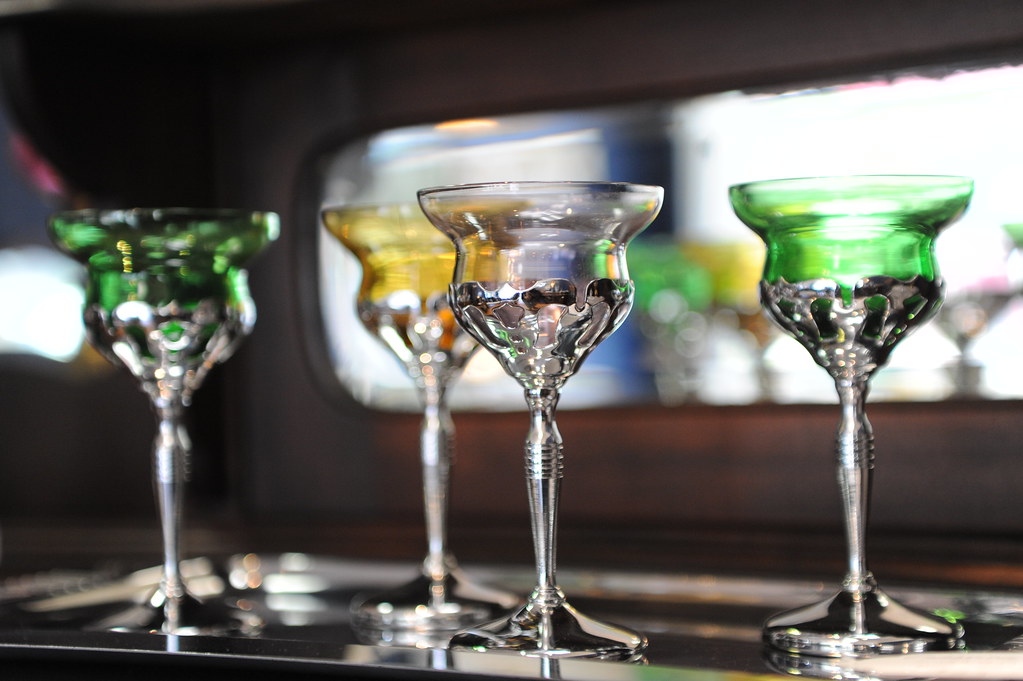
Pattern
Old products don’t often come with a mark. In this case, you need to work with their characteristic patterns to tell if you have antique items.
This task involves a quick search on the internet as the manufacturers gave their products a unique look and claimed them officially.
Color
When you can’t find any mark or signature on your glassware, its distinctive color or bi-color can help. There are many hues of antique glass, but the following are the most prevalent:
- Red Cranberry: Old glass items have this color due to combining molten glass and gold oxide.
- Deep Blue: Cobalt salts give glass this color.
- Pale Green: The extra uranium in the components lends the glass this unique touch.
- Golden Amber: You will see this hue after introducing sulfur to the glassware.
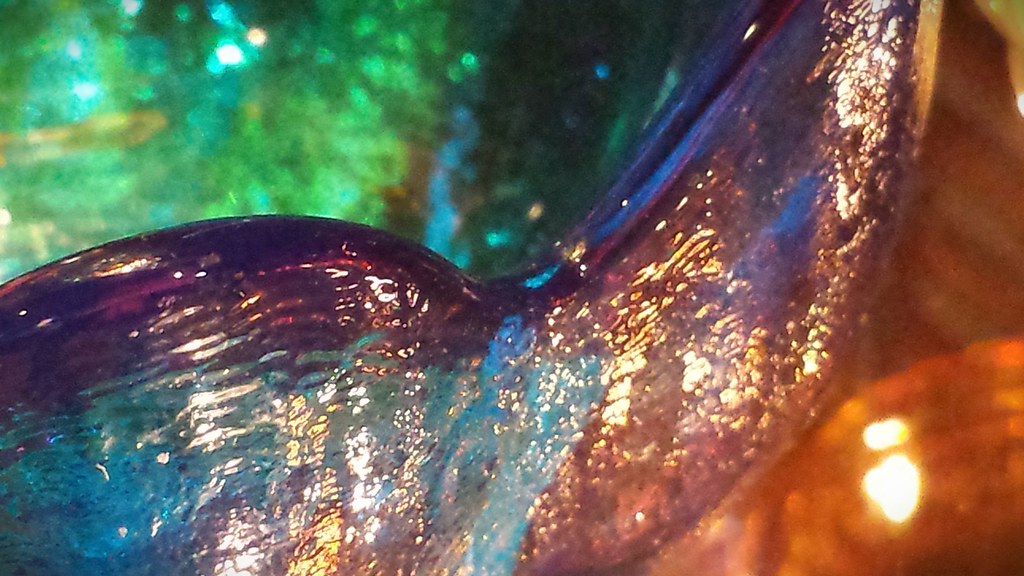
Imperfections
Due to the lack of technology, old glassware had flaws in its production. Although most imperfections lower your glassware’s value, they are solid evidence you have an antique item.
The following table will be the most common imperfections you can find in antique glass items:
| Imperfections | Signs |
| Scratches | These flaws are always indications of aging and frequent use. They usually go in all directions from the bottom of the antique item. |
| Chips | The chips are deep yet smooth, and you can only feel them under your fingers. |
| Cracks | Finding cracks on glassware with intricate patterns will be difficult. So, you can take it to a light source and locate the cracks. |
| Rough spots | These spots land on the base or rim of the glassware. You can feel them when running your fingers across these areas. |
| Flaking | This kind of imperfection develops on the rim of old glassware. Fortunately, it won’t affect the worth of the item. |
| Bubbles | Tiny bubbles form inside the glass because of the manufacturing process. |
| Nicks | Antique glassware sometimes lacks pinhead-sized parts. They are not glass damage and have no impact on the cost. |
| Straw marks | The bottom of antique glassware may have straw marks caused by the glass drying process. |
Feeling
The difference in color, weight, and clarity will help you distinguish antique vs. new glassware. The old ones have sharp cuts, while the new ones have smooth cuts and signs of assembled mold halves.

Types Of Antique Glassware
It’s easier to value your antique glassware if you know its characteristics. These products are available in different types, each with specific features.
Read more : Antique Centres in North Yorkshire
We will reveal the most popular types of antique glassware in this section. We also include its estimated value.
But please note that the price ranges here are average. Many factors, such as the condition of the item and the manufacturer, will affect the price significantly.
Art Glassware
- Peak time: 1900
- Value: Up to $2,000 at auctions
These models first appeared and became popular in the 1900s. You can find many handcrafted bowls, bottles, paperweights, and vases made of this kind of glass.
Durand, Tiffany, Quezal, and Steuben are leading companies in this category. They are famous for producing glassware in vivid colors with details inspired by nature.
In the 1950s and 1960s, art glassware became prevalent collectibles. The price for those items varies depending on the manufacturer and their conditions. People even sell them at auctions for up to $3,000.
Carnival Glassware
- Peak time: 1950s
- Value: Up to $16,000 at auctions
The Fenton Glass Company created the glassware in 1907. The company used them as rewards for carnivals since they were too pricey for the typical American family.
Despite a drop in popularity by 1925, collectors became more aware of these antiques in the 1950s. The most visible feature was a brilliant shine that changed color depending on the viewpoint angle.
Today, the price of these antiques varies according to their kind, size, hue, condition, and manufacturing year.
Sets, large pieces, and anything made before the 1940s is the most costly. A rare piece made of ice green or marigold glass costs over $16,000, and they are rare and expensive.

Crystal Glassware
- Peak time: 19th century
- Value: Up to $4,000 at auctions
The glassware looks similar to the regular type, but the quality is higher. Thanks to their reflective effect, wealthy people liked to use them in the 19th century.
Crystal, in general, can reflect light and has a fun sound when knocked. You will also love how smooth and durable these items are.
Crystal glassware items differ in price. The most expensive models are ones made in the American Brilliant time. They may cost up to $4,000 at auctions.
Milk Glassware
- Peak time: 1940s to 1950s
- Value: $10 to $30 per piece
The opaque white glassware was a less expensive alternative to one from China and Europe. During the 20th century, antique milk glass was popular in the US, yet you can still find similar items made in the 1940s.
Despite the name, this type of glassware frequently appeared in colors of yellow, brown, pink, blue, and black with striking latticework edges.

Depression Glassware
- Peak time: 20th century
- Value: $100 to $200 per piece
These stunning yet affordable items came out during the Great Depression. However, they only became popular in 1925.
You can find Depression glassware in different colors, conditions, and quality these days. The price varies as a result.
The items may come with flaws, such as bubbles or inconsistent coloring. However, the imperfections will help you confirm their authenticity.
Elegant Glassware
- Peak time: Great Depression
- Value: Thousands of dollars per set
Depression glassware was famous, but you can also find elegant glassware with the same quality and craftsmanship.
These classy items are available in a variety of styles, hues, and patterns. Characteristics, conditions, the maker, and the year of production all affect how much they are worth.
Some products come in sets. So you can get a cheap candle holder for $15 and a dinnerware set for thousands of dollars.
Kitchen Glassware
- Peak time: Great Depression
- Value: A few hundred dollars per set
Another glass type from the Great Depression is the kitchen glassware collection. It includes multiple glass types, such as Jadeite and Delphite glass.
The price depends on multiple factors. For example, you can buy a simple dinner plate for $15 or get a full set of mugs for hundreds of dollars.
American Brilliant Glassware
- Peak time: 1900s
- Value: Varying
Although handcrafted cut glass products date back to Ancient Egypt, they only really grew in popularity in the US between 1850 and the beginning of the 1900s.
Since artisans often tried to pass off their creations as fine European glass, most older artifacts didn’t have signatures.
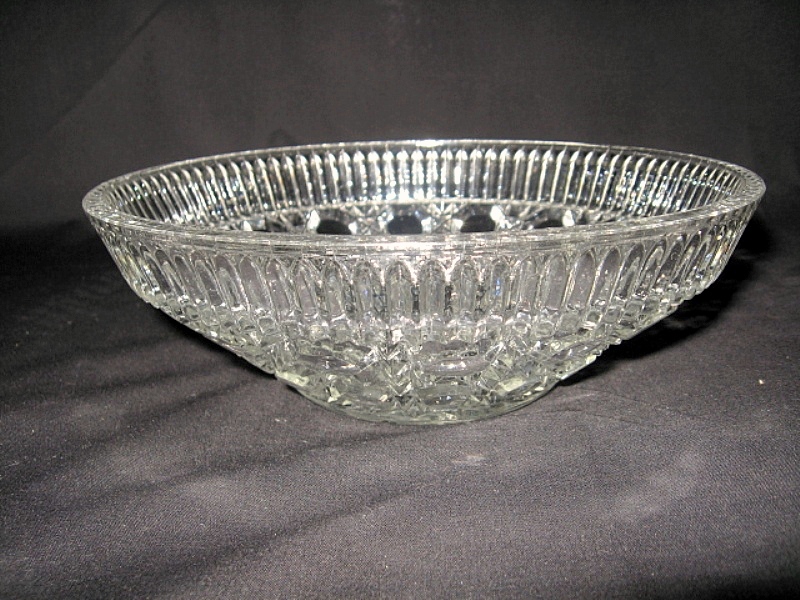
How to Tell if Your Glassware Is Rare?
The rarer the antique, the more valuable it is. Your antique glassware item is rare if it has the following characteristics:
- Unique color: Pink, green, or pink are common colors found in glass. If your antique has an unusual color, there will be a higher chance that it’s rare.
- Bi-color: Glassware with two colors are more valuable than one with a single tint. Although this idea is not always true, you should still take your time checking to value the antique correctly.
- Special shape: Unusual items with strange shapes may refer to something valuable.
- Signature: Some famous artists sign on their glass art. The signature then turns your antique into a rare and unique item.
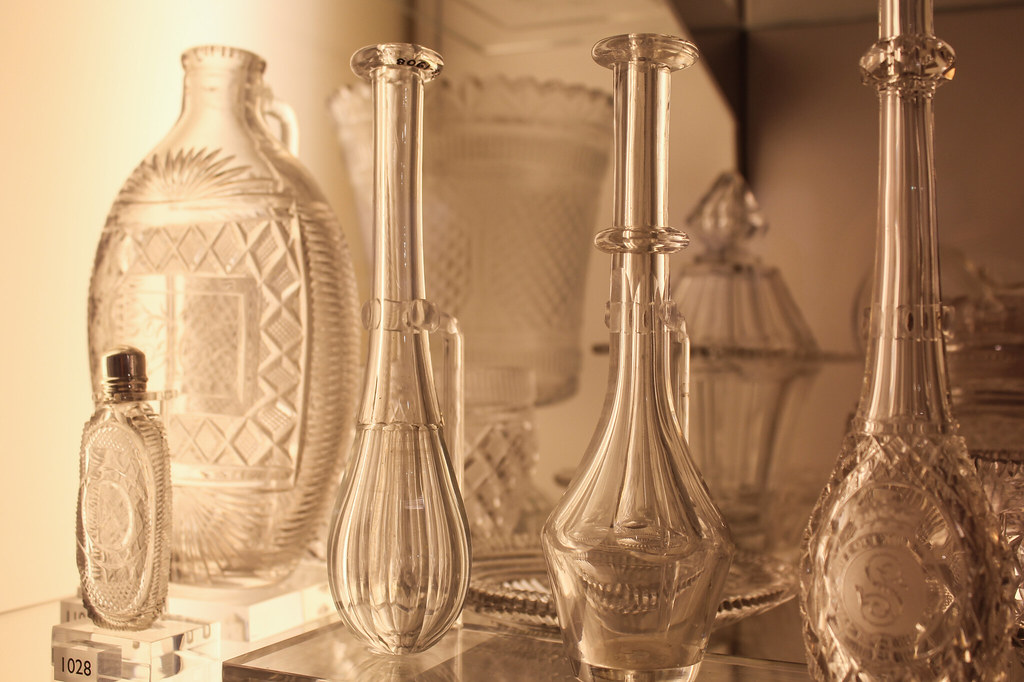
Antique Glassware Manufacturers
Numerous glass makers created what we consider “antique glass” these days. The most famous brands are Fenton and Hazel-Atlas.
Fenton Glassware
Fenton is a prominent glass-making company in America. It first produced carnival glass and gained popularity in 1907.
Over time, the company created many glass types, such as milk, chocolate, opalescent, and more than 150 glass patterns.
People appreciate Fenton glassware due to its style and design. Both bright and twisting spiral items are well-liked.
Hazel-Atlas
Hazel Atlas was a big producer of a significant amount of Depression-era glassware. The business kept going until it became a part of Brockway Glass Company in 1964.
Many of the company’s antique glassware items bear the trademark of a capital A nestled into the bottom of the letter H.
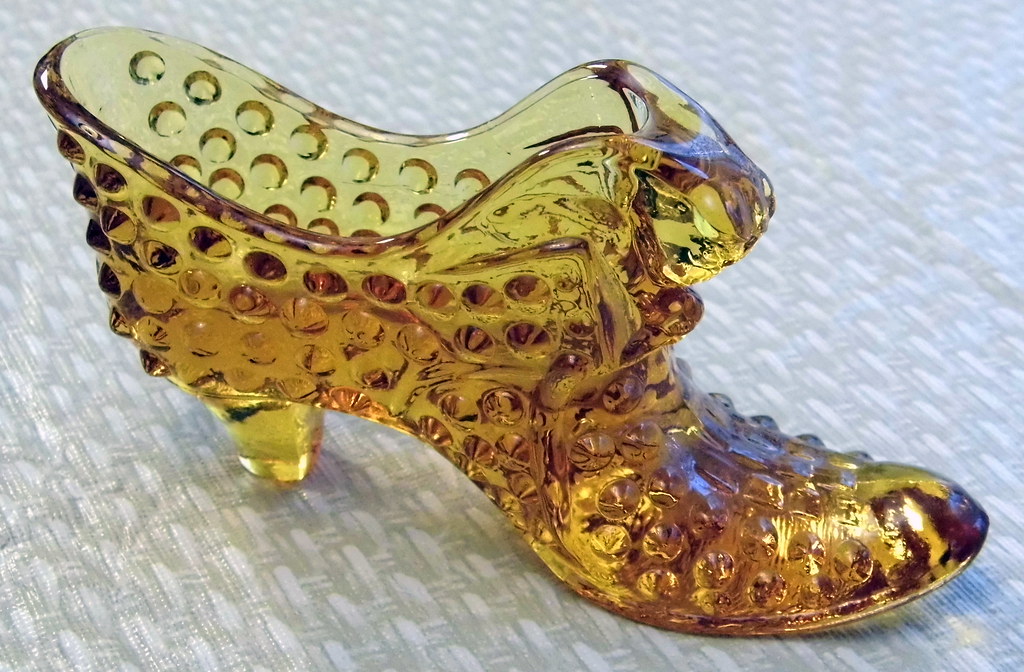
FAQs
1. What kind of glass is worth money?
Because it contains lead oxide and requires more effort to create than standard glass, crystal is one of the more famous types of glassware. Hence, it will be highly valuable.
2. What color of vintage glass is most valuable?
Pink is usually the most expensive color since it is rare. Depression glass with yellow or amber hues is abundant and hence less costly.
3. What is the rarest glass?
Due to its rarity, gray sea glass is extremely difficult to obtain. Gray sea glass comes in various hues, with the darker varieties being the most sought-after.
Conclusion
There have been several peaks and troughs in the antique glassware industry. You must be aware of their manufacturers and characteristics to ensure you get the right antiques.
Some hints, like the marks, color, feeling, and even imperfections, help you identify the antiques. You should also learn more about multiple glass types to determine those items’ value.
Hopefully, you will find this guide helpful. For any further information, please feel free to ask. We will get back to you soon.
Thank you for reading, and see you in the next post!
Source: https://antiquewolrd.com
Categories: Antique News

